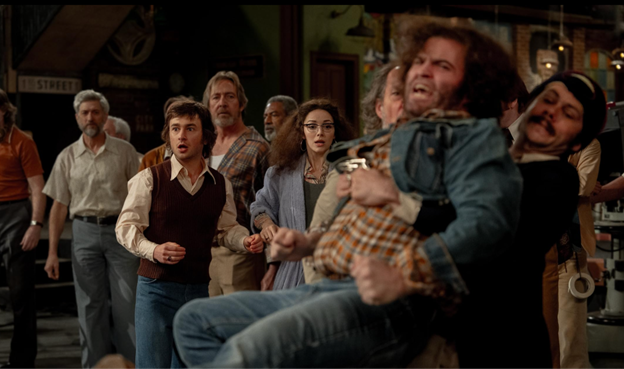The theater at Amherst Cinema was packed almost to capacity this past Sunday at 1 p.m., a sign of an audience buzzing with anticipation for the special screening of Farah Khan’s 2007 Bollywood box-office hit “Om Shanti Om,” presented by the Asian Arts and Culture Program. Audience members both young and old were quickly introduced to the film by event curator Anne Ciecko, and as soon as the lights went down, all were spellbound for the film’s full 162 minute runtime (plus intermission, of course).
Starring Hindi film megastar Shah Rukh Khan, this film acted as a glorious send-up of the very industry that spawned it. Those in the audience who were able to appreciate the many inside jokes this film contained were roaring with laughter, occasionally leaving people less familiar with Bollywood behind. However, not too much was lost in translation. With songs that stick in your head for days, jokes that are laugh-out-loud funny, and incredibly engaging dance sequences, “Om Shanti Om” was an audience favorite this past Sunday!
Bollywood has long been a point of division for followers of film. There are some who see the extended song-and-dance sequences, over-the-top humor, and elongated run times, and feel the need to call them self-indulgent. Meanwhile, followers and lovers of this long-running film industry know that these aspects of the films are in fact their rallying points and, for the most part, their reasons for existence. Meanwhile, for American audiences who know what to look for, Bollywood films are a throwback to the Hollywood musicals of old. “Om Shanti Om,” with its clever homages to the tropes and clichés of Hindi films, manages to act as Bollywood’s “Singing in the Rain”— its love letter to its parent industry. The list of cameos stretches far back into the industry’s past, and contains some shockingly familiar faces (which will not be spoiled, for curious film goers).
“Om Shanti Om,” through its setting alone, can be seen as a tribute to the Bollywood film industry. It begins in 1977, with junior artist Om Prakash Makija, played by Khan, who in the first half of the film pulls off the somewhat difficult task of being an internationally-known sex-symbol who has to play a schlub. He has dreams of stardom, but unfortunately has yet to be blessed with much in the way of talent or luck. In yet another throwback to Bollywood’s past, we first meet him on the set of the 1980 film “Karz,” of which “Om Shanti Om” has been called a partial remake. His familiars once again play off old Bollywood clichés, with a melodramatic mother (Kiron Kher, who spends much of her time holding her hands up to her weeping face while music swells) and a typical “buddy comedy” companion (Shreyas Talpade).
Om also is in love with the toast of the Bollywood scene at the time, Shantipriya, played by newcomer Deepika Padukone. Although she isn’t given much in the way of acting challenges (due to being the “love interest,” and little else), she manages to look pretty in medium close-up and effectively sings and dances her way through the songs.
The storyline develops in a pretty typical Bollywood manner. The lovers meet by chance, die by intermission, are reincarnated at the start of the second half, and kill off the villain by the end. Apologies must be made if this seems like a spoiler, but any fan of Bollywood will tell you that this storyline is nothing new. In fact, the very fact that “Om Shanti Om” has this story can be seen as a commentary in itself!
The Asian Arts and Culture Program will continue to screen films as part of its New Asia Cinema series until December 2, every Wednesday evening at 7 p.m. in the Flavin Family Auditorium at the SOM. Those with an interest in world cinema would be well advised to attend the next screening.
Mark Schiffer can be reached at [email protected].






